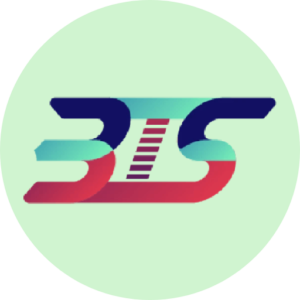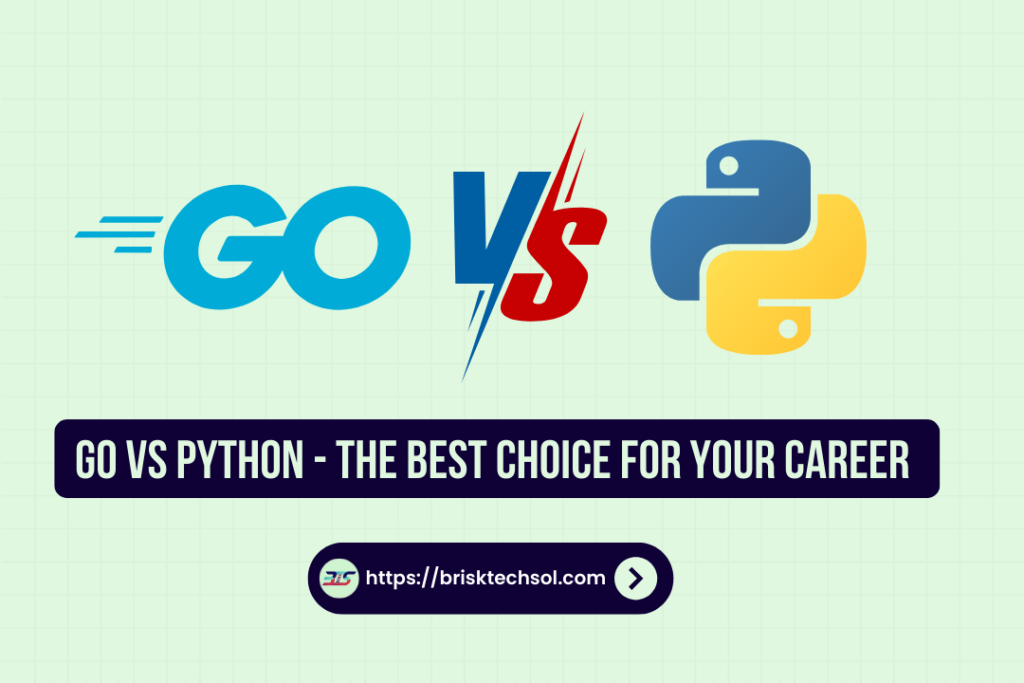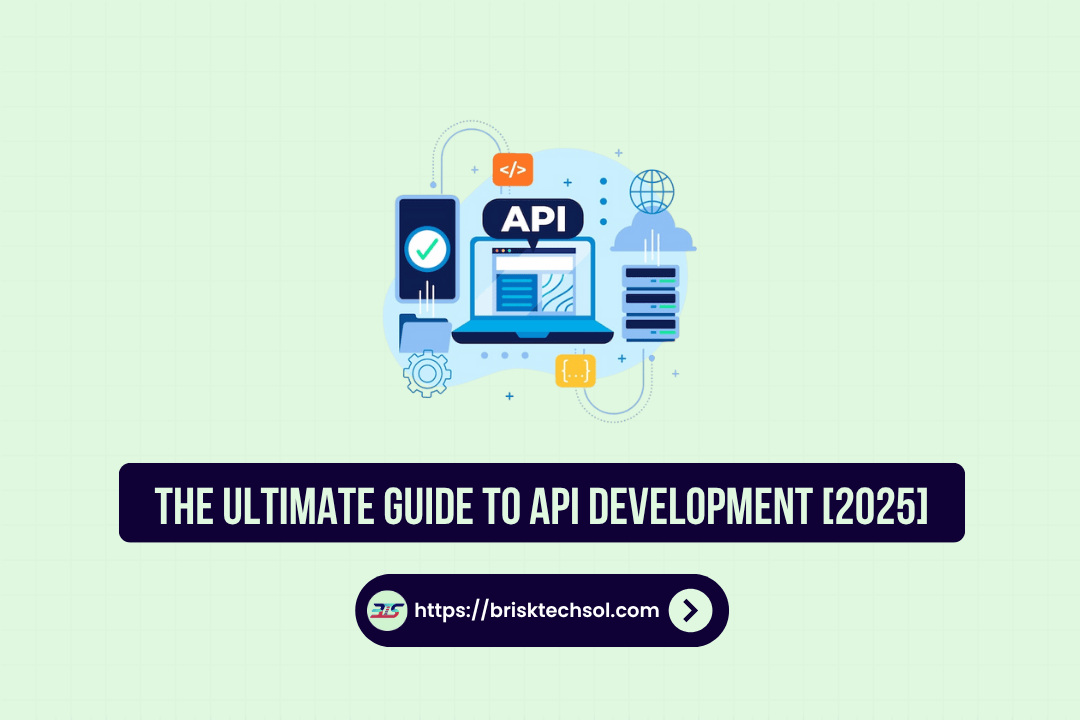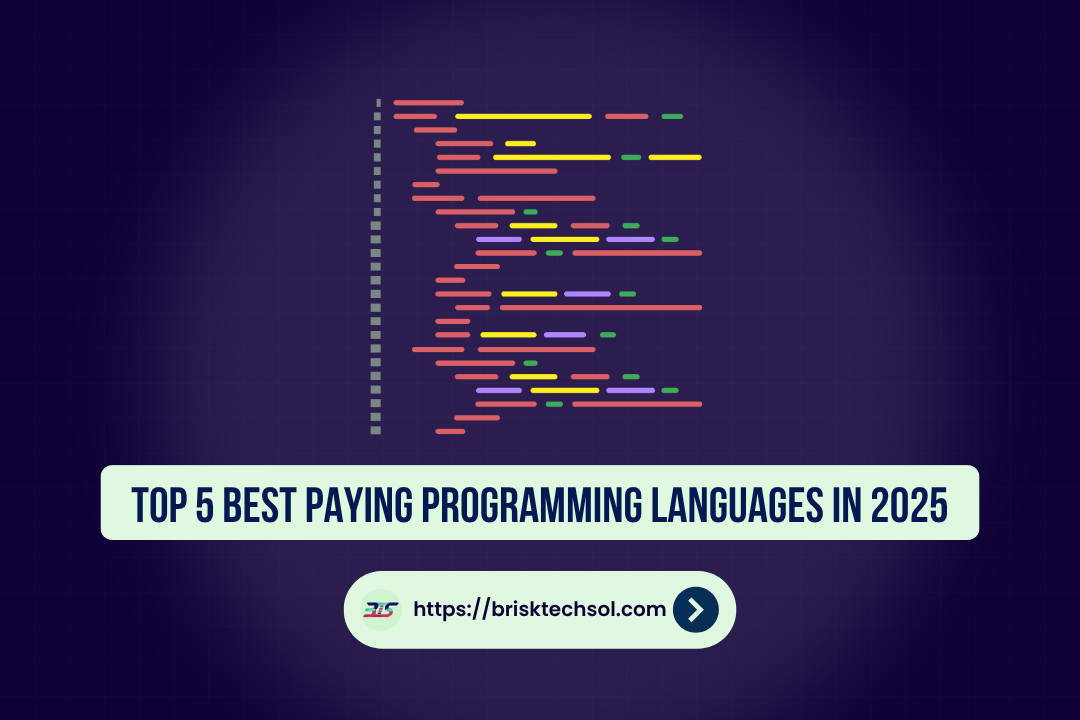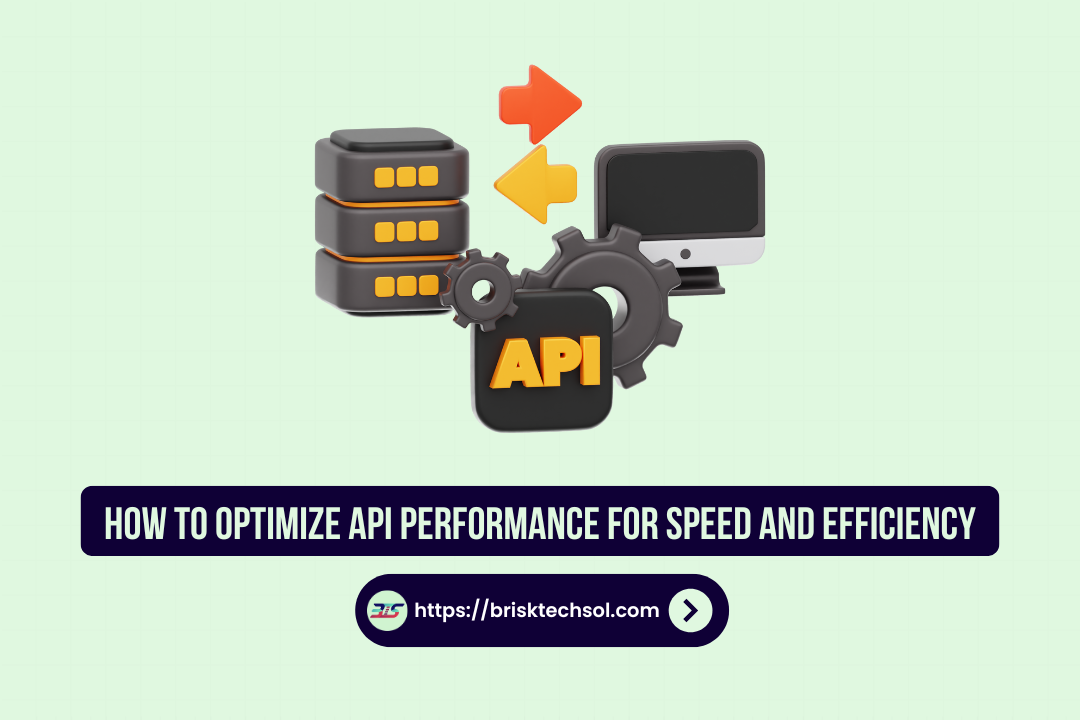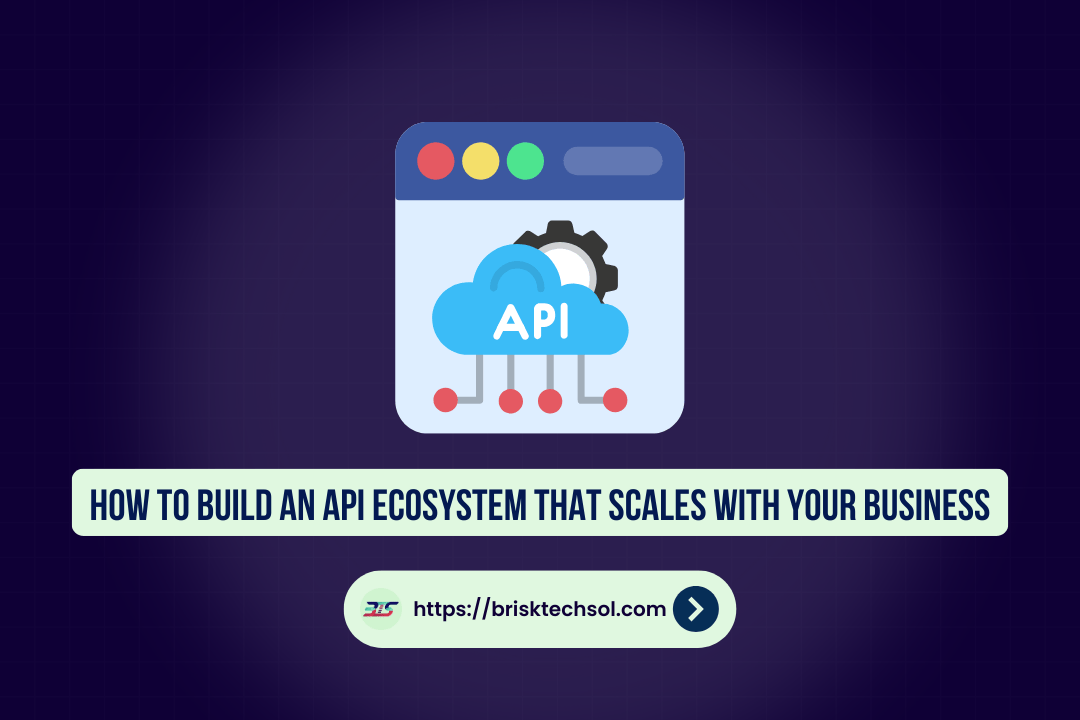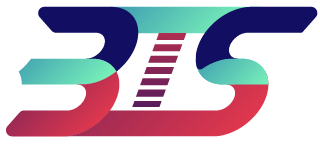When it comes to modern programming languages, Go and Python stand out as two of the most popular choices. Python is known for its simplicity and vast ecosystem, while Go (Golang) is praised for its speed and efficiency. But which one is better? This article compares Go vs Python based on performance, scalability, concurrency, and best use cases.
Overview of Go and Python
What is Python?
Python is a high-level, dynamically typed programming language that has gained immense popularity due to its ease of use and readability. Created by Guido van Rossum in 1991, it has grown into one of the most versatile languages, used extensively in web development, data science, AI, and automation. Its large standard library and active community make it an excellent choice for both beginners and experienced developers.
What is Go?
Go, also known as Golang, was developed by Google in 2009 to improve performance in large-scale applications. It is a statically typed, compiled language with a strong focus on simplicity and concurrency. Unlike Python, Go enforces strict type safety and compiles directly into machine code, resulting in faster execution times. Companies like Google, Uber, and Dropbox have adopted Go for high-performance backend systems.
Syntax and Ease of Learning
Python: Simple and Readable
One of Python’s greatest strengths is its easy-to-read syntax. The language was designed to be as close to natural language as possible, making it beginner-friendly. Instead of using curly braces {} for code blocks, Python relies on indentation, which enhances readability.
For example, a simple function in Python looks like this:
pythonCopyEditdef greet(name):
return f"Hello, {name}!"
print(greet("Alice"))
This clean and minimalistic approach makes Python an excellent choice for newcomers.
Go: Strict and Efficient
Go, while also simple, enforces strict type declarations and has a more structured syntax. It omits unnecessary features such as exceptions and class inheritance, favoring a minimalistic approach.
Here’s the same function in Go:
goCopyEditpackage main
import "fmt"
func greet(name string) string {
return "Hello, " + name + "!"
}
func main() {
fmt.Println(greet("Alice"))
}
While Go’s syntax requires more explicit declarations, it promotes clarity and efficiency, particularly in large-scale applications.
Which One is Easier?
For beginners, Python is the easier choice due to its intuitive syntax and extensive documentation. Go, while stricter, is relatively easy to learn compared to languages like C++ or Java.
Performance and Speed
One of the biggest differences between Go and Python is performance. Go is a compiled language, meaning the code is converted into machine code before execution, making it significantly faster. Python, being an interpreted language, executes code line by line, which slows down performance.
Go’s Speed Advantage
Go is designed for speed and efficiency. Because it compiles directly into machine code, Go applications execute much faster than Python programs. It is particularly well-suited for backend services, networking applications, and high-performance APIs.
Python’s Flexibility with Performance Trade-offs
Python is slower but compensates with a vast ecosystem of optimized libraries. In AI and data science, Python remains dominant because of libraries like NumPy and TensorFlow, which use C and C++ under the hood for computation.
Benchmark Comparison (Fibonacci Calculation)
| Language | Execution Time (ms) |
|---|---|
| Go | 5ms |
| Python | 30ms |
For CPU-intensive tasks, Go is the clear winner. However, if performance is not the primary concern, Python’s versatility makes it a solid choice.
Concurrency and Multithreading
Go: Built for Concurrency
Go was designed with concurrency in mind. It introduces Goroutines, lightweight threads that allow efficient multitasking. Unlike traditional threading, Goroutines consume minimal memory and make concurrent programming more manageable.
Example of a Goroutine in Go:
goCopyEditpackage main
import (
"fmt"
"time"
)
func sayHello() {
fmt.Println("Hello, World!")
}
func main() {
go sayHello()
time.Sleep(1 * time.Second) // Wait for the Goroutine to complete
}
Python: Limited by GIL
Python, on the other hand, struggles with concurrency due to the Global Interpreter Lock (GIL). This lock prevents multiple threads from executing Python bytecode simultaneously, making true parallelism difficult to achieve.
Although Python supports threading and multiprocessing, it is not as efficient as Go for handling concurrent tasks.
Which One is Better for Concurrency?
Go is the superior choice for concurrent applications, making it ideal for cloud services, network applications, and real-time processing. Python is better suited for sequential tasks and applications that rely on external libraries.
Scalability and Memory Management
Go: Optimized for Large-Scale Applications
Go’s memory management system is efficient, thanks to its optimized garbage collector. It minimizes latency, making it suitable for high-performance applications like web servers and cloud-based services.
Python: Flexible but Memory-Intensive
Python’s dynamic memory allocation makes it easy to use, but it can become inefficient in large-scale applications. Performance bottlenecks can arise when handling massive amounts of data, requiring additional optimization.
Which One is More Scalable?
Go is better for applications that require high performance and scalability, while Python is ideal for projects where flexibility and rapid development are key.
Use Cases and Industry Adoption
Both Go and Python have strong industry adoption, but they cater to different use cases. Understanding where each language excels can help developers and businesses make informed decisions.
Python: The Versatile Powerhouse
Python’s popularity stems from its versatility and extensive library ecosystem. It is widely used in:
- Web Development: Python frameworks like Django and Flask make building web applications fast and efficient. Many large-scale web platforms, including Instagram and Reddit, are built with Python.
- Artificial Intelligence & Machine Learning: Python dominates AI and ML due to libraries like TensorFlow, PyTorch, and Scikit-learn. Data scientists and researchers rely on Python’s simplicity and vast ecosystem.
- Data Science & Analytics: With tools like Pandas, NumPy, and Matplotlib, Python is the preferred language for big data processing, statistical analysis, and data visualization.
- Automation & Scripting: Python’s ease of use makes it ideal for writing automation scripts, whether for DevOps, software testing, or system administration.
- Cybersecurity: Python is widely used in penetration testing, network security, and forensic analysis due to frameworks like Scapy and PyCrypto.
Go: The Scalable Backend Champion
Go was designed for high-performance applications and excels in scenarios requiring concurrency, scalability, and efficiency. It is commonly used in:
- Backend Development & APIs: Go’s lightweight nature and fast execution make it an excellent choice for building high-performance web services and APIs. It powers platforms like Uber, Dropbox, and Twitch.
- Cloud Computing & Infrastructure: Go is the backbone of many cloud-based tools, including Docker, Kubernetes, and Terraform, making it essential for DevOps and cloud engineers.
- Networking & Microservices: Companies use Go to build scalable, distributed systems and real-time networking applications. Its built-in concurrency model ensures smooth data handling across services.
- Game Development: Although not as popular as C++ in gaming, Go is gaining traction for server-side game logic, particularly in multiplayer online games.
- Blockchain & FinTech: Go is widely used in blockchain projects, including Ethereum, Hyperledger Fabric, and Tendermint, due to its speed and security.
Industry Adoption Comparison
| Use Case | Python | Go |
|---|---|---|
| Web Development | Django, Flask | Fiber, Gin |
| AI & Machine Learning | TensorFlow, PyTorch, Scikit-learn | Not widely used |
| Data Science & Analytics | Pandas, NumPy, Matplotlib | Limited adoption |
| Automation & Scripting | Selenium, Ansible | Not commonly used |
| Backend Development | FastAPI, Flask | Go’s standard library, Gin, Echo |
| Cloud Computing | AWS Lambda, Google Cloud Functions | Kubernetes, Docker, Terraform |
| Networking & APIs | Limited concurrency support | Goroutines for high-performance networking |
| Cybersecurity | Scapy, PyCrypto | Used in network security tools |
| Blockchain & FinTech | Not commonly used | Ethereum, Hyperledger, Tendermint |
Future Trends and Job Market
As the software industry evolves, both Go and Python are experiencing increased demand. However, their growth trajectories differ based on emerging trends in technology and industry needs.
The Future of Python
Python’s dominance in AI, ML, and data science is expected to continue growing as more industries adopt artificial intelligence-driven solutions. Some key future trends include:
- AI and Machine Learning Expansion: The demand for AI engineers and data scientists proficient in Python will remain high as businesses leverage AI for automation, analytics, and decision-making.
- Growth in Cybersecurity & Ethical Hacking: Python-based security tools will continue to evolve, making Python a crucial skill for cybersecurity professionals.
- Increased Adoption in Finance & Trading: With Python’s growing use in quantitative finance and algorithmic trading, the demand for financial engineers with Python expertise is rising.
- Web Development Evolution: Frameworks like FastAPI and Flask are making Python more competitive in high-performance web applications.
The Future of Go
Go is rapidly gaining popularity in cloud computing, backend development, and large-scale enterprise applications. Key future trends include:
- Rise in Cloud Computing & DevOps: As cloud services expand, Go will play a significant role in building efficient cloud-based applications.
- Dominance in Microservices Architecture: More companies are shifting towards microservices, where Go’s speed and concurrency make it a top choice.
- Adoption in AI & Data Engineering: While Python leads in AI, Go is starting to make inroads in building AI-driven backend services and real-time data pipelines.
- Increased Use in FinTech & Blockchain: With financial applications requiring speed and reliability, Go is becoming the language of choice for blockchain development.
Job Market and Salary Comparison
| Language | Average Salary (2024) | Job Openings (2024) | Growth Potential |
|---|---|---|---|
| Python | $120,000 | 100,000+ | High |
| Go | $135,000 | 40,000+ | Rapidly Growing |
While Python has more job openings due to its widespread use, Go developers often command higher salaries, especially in backend development and cloud engineering.
Which Language Has Better Career Prospects?
- If you’re interested in AI, machine learning, or data science, Python remains the best choice.
- If you want to work in high-performance backend systems, cloud computing, or DevOps, Go is an excellent option.
Both languages offer strong career opportunities, and learning both can significantly enhance your job prospects in the ever-evolving tech industry.
Key Takeaways
- Python and Go Serve Different Purposes
- Python excels in AI, machine learning, data science, and automation.
- Go is ideal for backend development, cloud computing, and microservices.
- Use Case Comparison
- Python is widely used in web development, AI, data analytics, and cybersecurity.
- Go is preferred for cloud infrastructure, backend APIs, networking, and blockchain.
- Industry Adoption
- Major companies like Google, Netflix, and Dropbox use Go for high-performance applications.
- Python powers AI-driven platforms like TensorFlow, OpenAI, and Pandas for data science.
- Future Trends
- Python’s demand will grow in AI, automation, and finance.
- Go will expand in cloud computing, DevOps, and microservices architecture.
- Job Market & Salary Trends
- Python has more job opportunities, especially in AI and data science.
- Go developers earn higher salaries, particularly in cloud and backend roles.
- Career Guidance
- Choose Python if you’re interested in AI, web development, or automation.
- Opt for Go if you want to work on scalable backend systems, networking, or cloud applications.
- Learning both can maximize career opportunities in the evolving tech industry.
FAQ’S
Which is better, Go or Python?
It depends on your use case. Python is better for AI, data science, and automation, while Go excels in backend development, cloud computing, and high-performance applications.
Is Go faster than Python?
Yes, Go is significantly faster than Python due to its compiled nature and efficient concurrency model. Python is slower because it is an interpreted language with dynamic typing.
Which language has better job opportunities: Go or Python?
Python has more job openings, especially in AI, data science, and web development. However, Go developers often earn higher salaries due to its demand in cloud computing and backend engineering.
Is Go harder to learn than Python?
Yes, Python is easier to learn due to its simple syntax and readability. Go has a more structured approach and requires understanding concepts like goroutines and strict typing.
Should I learn Python or Go first?
If you’re new to programming, start with Python because of its beginner-friendly syntax. If you’re interested in backend development or cloud computing, learning Go first can be beneficial.

